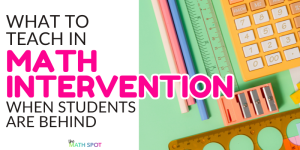Comparison is a notoriously difficult math topic to teach. The most important things to remember when introducing comparisons are to keep it concrete and emphasize comparison conversation.
Activity # 1: Counting & Comparing Sets
Keep It Concrete: Given a comparison card with two numbers, students count out blocks or counters to represent each number on the card. Students will then be able to reference their blocks to clearly see which number is more and which is less.
Comparison Conversation: Context can help to get a conversation started! On these animal cards, the number corresponds to a type of animal. In this way, the students have more opportunities to talk about the comparison in a variety of ways. These cards are free in my TPT store if you would like to grab them 🙂
When looking at this comparison card, students would lay out 2 counters to represent the 2 pandas and 6 counters to represent the 6 flamingos. Encourage the students to talk about and compare both the animals and the numbers in isolation.
“There are fewer pandas than flamingos.”
“Two is less than six.”
“There are more flamingos than pandas.”
“Six is more than two.”
Activity # 2: Sorting Sets
Keep It Concrete: Start by giving your students a target number. For example, 7. Ask your students to take a small scoop of counters and count to find how many. Your students will then determine whether they have more, less or the same amount as the target set.
Comparison Conversation: Every time a student sorts and places a card have them say aloud a full sentence explaining why they are sorting in the way that they are. “My scoop is more because 9 is more than 7.” “My scoop is the same because they both have 7” or “My scoop is less because 2 is fewer than 7”.





